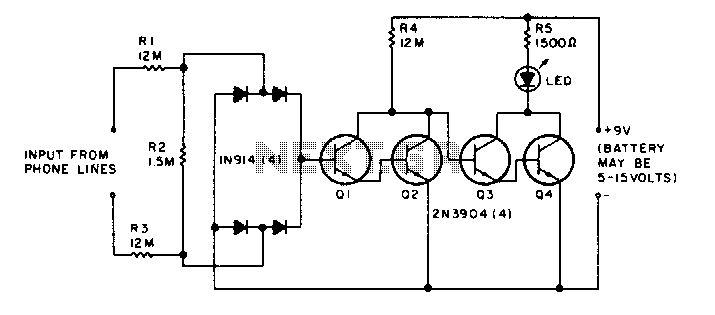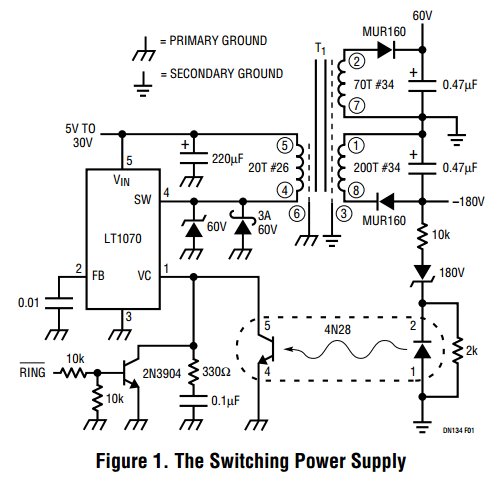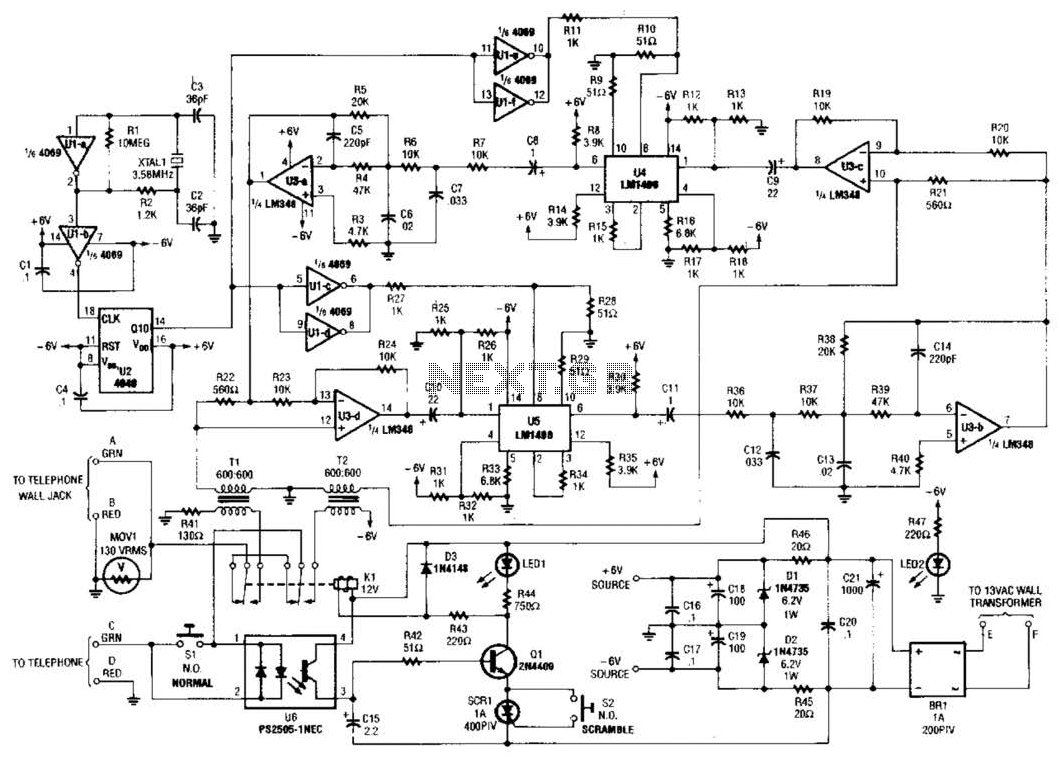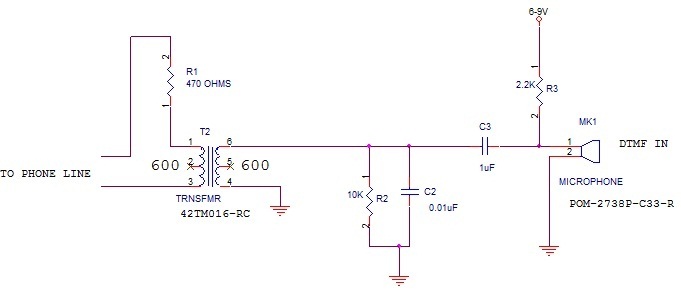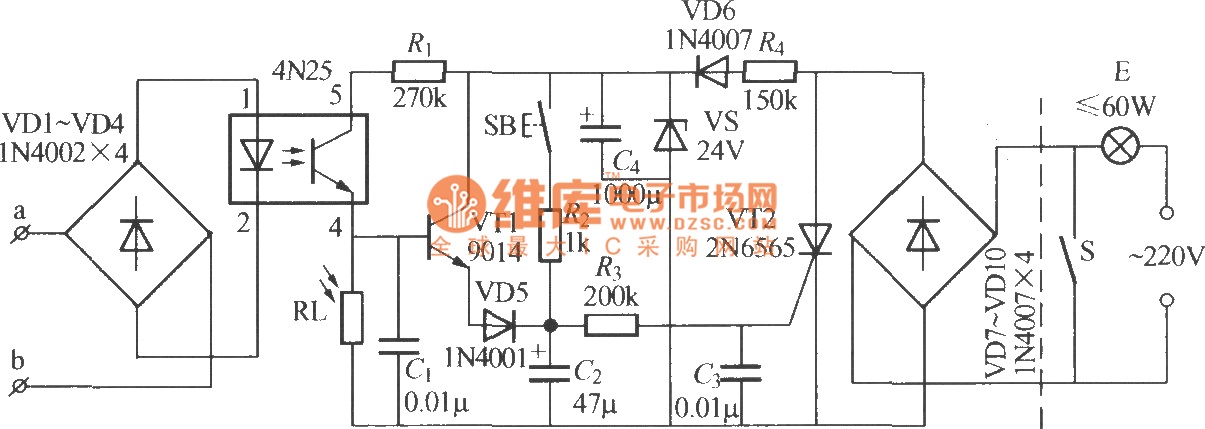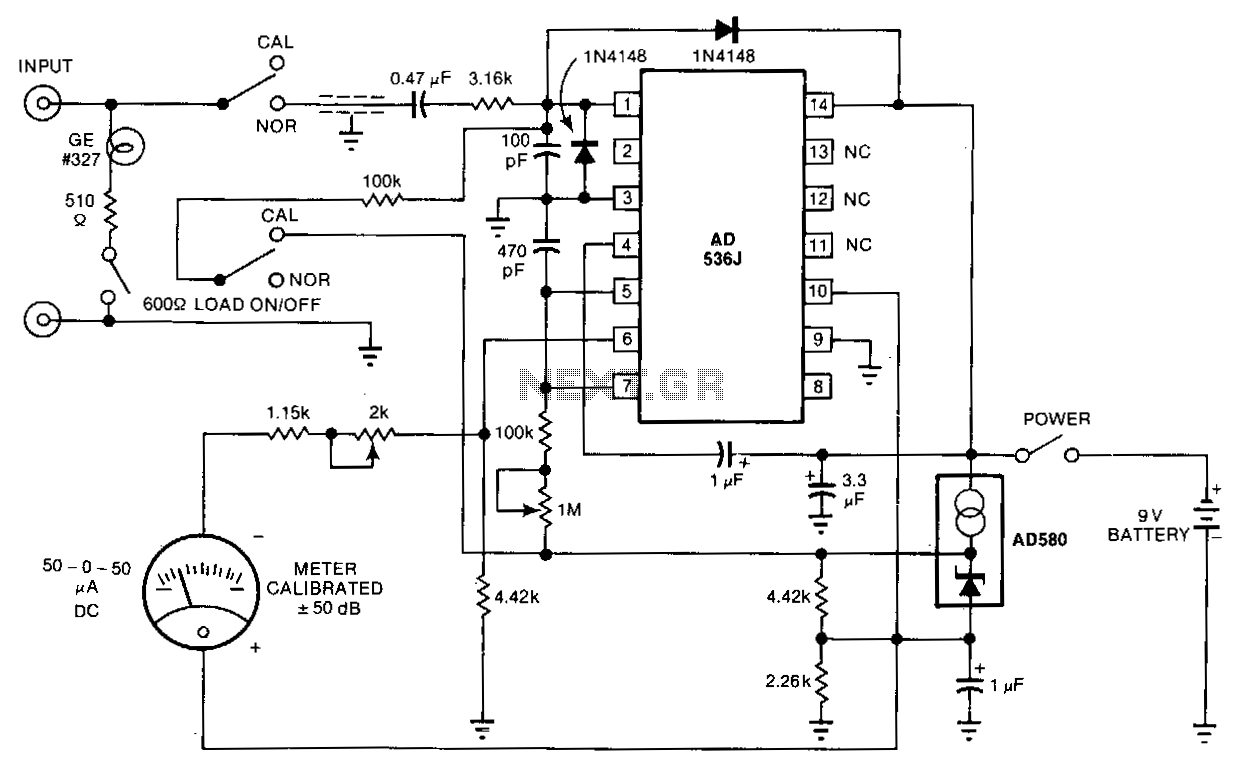
Telephone ringer piezoelectric
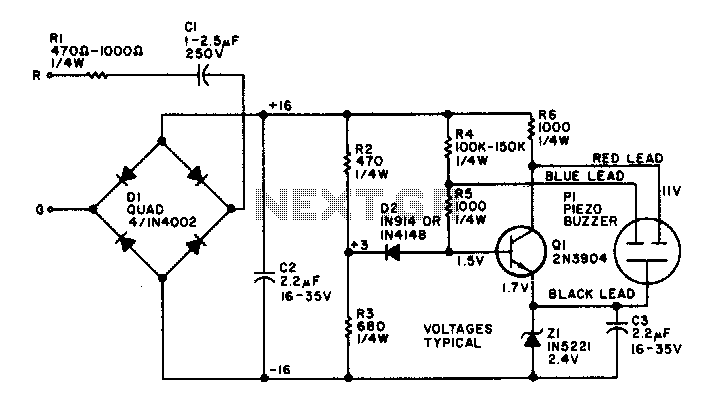
The electronic bell operates without a power supply. Most resistors in the circuit are not critical, although capacitor C2 and resistors R2 and R3 perform optimally at the specified values. Omitting resistor R1 will increase the volume of the ringing sound. The piezo buzzer may differ in specifications depending on the retailer. If the buzzer has two leads, the red lead should be connected to the collector and the black lead to the emitter of transistor Q1. If a third (blue) lead is available, it should be connected to the base of Q1.
The electronic bell circuit is designed to function autonomously, utilizing a piezo buzzer as the sound-producing element. The circuit architecture is simplified, relying on passive components such as resistors and capacitors, with specific emphasis on the values of C2, R2, and R3, which are critical for optimal performance. The omission of resistor R1 is a design choice that directly influences the sound output level, allowing for a louder ringing tone, which may be desirable in certain applications.
The piezo buzzer, a key component in this circuit, is versatile and can be sourced from various suppliers, leading to potential variations in specifications. The connection scheme for the buzzer is straightforward: the red lead is to be connected to the collector of the transistor Q1, while the black lead connects to the emitter. This configuration is essential for the proper functioning of the circuit, as it allows the transistor to control the piezo buzzer effectively.
In cases where the piezo buzzer includes a third lead, typically colored blue, this lead is connected to the base of transistor Q1. This additional connection can enhance the control over the buzzer's operation, providing more refined modulation of the sound output. The overall design of the electronic bell circuit is efficient and user-friendly, making it suitable for various applications where a simple, battery-free sound signaling device is required.The electronic bell needs no power supply. Most of the resistors are not critical, although C2, R2, and R3 work best at the values given. Leaving out Rl will make the unit ring louder. The piezo buzzer may vary from store to store. If it has two leads, connect the red lead to the collector and the black lead to the emitter of Ql If a third (blue) lead is present, connect it to the base of Ql.
The electronic bell circuit is designed to function autonomously, utilizing a piezo buzzer as the sound-producing element. The circuit architecture is simplified, relying on passive components such as resistors and capacitors, with specific emphasis on the values of C2, R2, and R3, which are critical for optimal performance. The omission of resistor R1 is a design choice that directly influences the sound output level, allowing for a louder ringing tone, which may be desirable in certain applications.
The piezo buzzer, a key component in this circuit, is versatile and can be sourced from various suppliers, leading to potential variations in specifications. The connection scheme for the buzzer is straightforward: the red lead is to be connected to the collector of the transistor Q1, while the black lead connects to the emitter. This configuration is essential for the proper functioning of the circuit, as it allows the transistor to control the piezo buzzer effectively.
In cases where the piezo buzzer includes a third lead, typically colored blue, this lead is connected to the base of transistor Q1. This additional connection can enhance the control over the buzzer's operation, providing more refined modulation of the sound output. The overall design of the electronic bell circuit is efficient and user-friendly, making it suitable for various applications where a simple, battery-free sound signaling device is required.The electronic bell needs no power supply. Most of the resistors are not critical, although C2, R2, and R3 work best at the values given. Leaving out Rl will make the unit ring louder. The piezo buzzer may vary from store to store. If it has two leads, connect the red lead to the collector and the black lead to the emitter of Ql If a third (blue) lead is present, connect it to the base of Ql.
